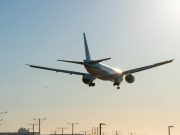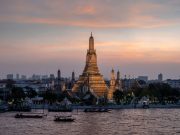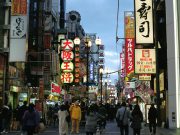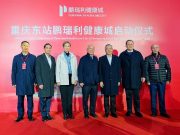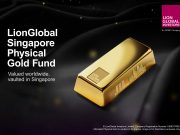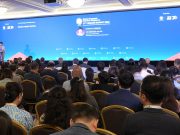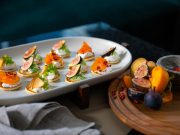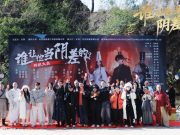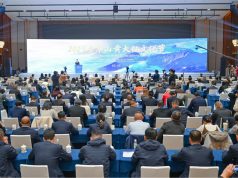(Singapore, 12.8.2025) The frenzy of Hong Kong residents heading north into mainland China to shop has continued unabated since the end of Covid. Meanwhile, a bigger reverse purchasing trend has also emerged among Hongkongers: they are not just doing guerilla shopping but buying up almost everything, from daily necessities to houses up north.
Xinpinlüe Finance, a media platform focused on financial news, noticed that on August 8, the topic “Hong Kong People Starting Reverse Purchasing” once ranked among the top ten trending topics on China’s popular Weibo social media platform, sparking renewed market attention and heated discussions on the development.
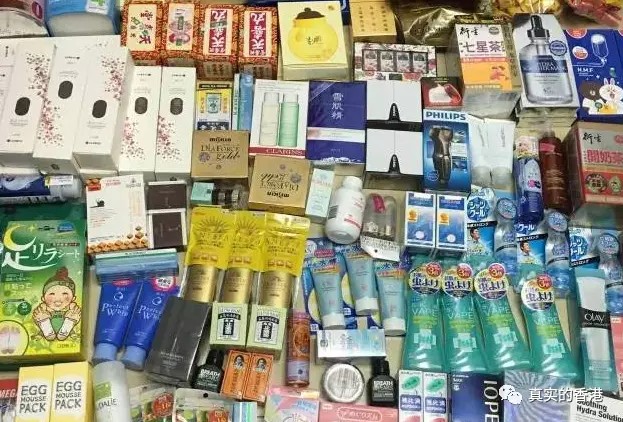
This time, the topic trended because Sina News published an article titled “Why Hong Kong People Queue Up on Weekends to Send Money North”, which brought up the sensitive and painful topic of housing woes among Hongkongers.
There are 220,000 people in Hong Kong cramped into subdivided flats smaller than 10 square meters, and an average family take 14.4 years to save to buy a home, noted the Xinpinlüe Finance.
But now, the dream for a 90-sq-m luxury home in Hong Kong can be immediately realized in Guangdong just by paying the down payment. Indeed, in the past year or two, some sources confirm that quite a number of Hongkongers are buying property in the Greater Bay Area.
The Sina report quotes Bank of China’s survey data showing among the Greater Bay Area cities, Hongkongers prefer first and foremost the property in neighboring Shenzhen, followed by Guangzhou, Zhongshan, Zhuhai, and Macau.
Buying high-value real estate up north is a recent major luxury consumption, which follows from a longer-standing trend of Hongkongers going north to shop and spend money on goods and services, observed Xinpinlüe Finance.
Due to exchange rates, Hongkong dollar gives Hongkongers stronger purchasing power in the Greater Bay Area. Since the pandemic, the trend of shopping up north has gathered pace, with torrents of Hongkongers enjoying shopping, dining, entertainment, and grandiose services in mainland China, often better than in Hong Kong itself.
For example, Hongkongers love going to the popular membership-based warehouse supermarket Sam’s Club. Families or friends would leave Sam’s Club stores in Shenzhen, Zhuhai, and other cities loaded with purchases, creating spectacles labelled as “Hongkongers emptying Sam’s Club.”
With the increasingly convenient rail links between Hong Kong and the mainland, Hongkongers’ shopping trips are no longer limited to Guangdong Province. They have ventured beyond to popular tourist cities like Changsha and Chongqing.
A research report released on June 19 by the Chinese University of Hong Kong shows that Hong Kong residents on average spend about HK$300 (about S$50) to $500 when shopping up north. Among frequent shoppers, over 80% of their spending are splurged on things that make them feel good, such as health and beauty products, massage, and other personal services. Many Hongkongers even go to the mainland for dental treatments such as implants, as dental costs in Shenzhen are much cheaper than in Hong Kong.
Then there is another trend: re-selling. Financial Times once reported on a Hong Kong reselling business bringing milk tea from Shenzhen back to Hong Kong, earning hundreds of Hong Kong dollars per trip.
Early last year media reported that Hongkongers were “buying out Shenzhen” to re-sell in Hong Kong, with individuals earning HK$30,000 monthly and teams HK$200,000 per month. Some even opened mainland popular product stores in Hong Kong, with orders so huge that customers had to queue.
During China’s early reform era in the 70s and 80s, textiles, clothing, electronic watches, radios, other light industrial products, and small home appliances such as TVs entered the mainland market from Hong Kong through various channels. The second wave began around 2005 when mainland supermarkets and commerce were still underdeveloped and lagged far behind Hong Kong.
Then came the third wave when mainland Chinese visited Hong Kong in droves. Whether it was luxury goods in Hong Kong’s Causeway Bay, pharmacies in Mong Kok, baby formulas in Tsim Sha Tsui, or the newest iPhones, mainland tourists came to Hong Kong to buy in bulks. This boom lasted until just before the pandemic.
In recent years, with the mainland commercial ecosystem now more developed, boasting countless shopping centres, omnipresent foreign products, e-commerce, livestream sales, cross-border shopping, overseas warehouses, and facilitating policies, mainland consumers can now easily buy desired products via multiple channels, no longer keen on Hong Kong goods.
Xinpinlüe Finance believes that amid the recent trend, what is more significant is the start of an era where Hong Kong and the mainland are deeply integrated commercially and in terms of consumption, and this era is already here.
In recent years, many new consumer brands and internet-famous ones have sprung up in the mainland market. Facing fierce domestic competition and market saturation, many have chosen to go overseas, with Hong Kong as a preferred destination.
According to incomplete statistics, about 50 mainland brands have opened branches in Hong Kong in the past two years. Initially, these were mainly tea and restaurant chains, but recently, the variety has expanded.
Popular tea and coffee brands such as Nayuki Tea, Mixue Bingcheng, Bawang Tea, and Luckin Coffee have opened shops in Hong Kong, allowing Hong Kong consumers to easily get hold of trendy mainland tea and coffee.
Some mainland discount store brands have also entered Hong Kong, thrilling many local consumers. For example, the discount store Haotemai opened in Hong Kong selling cola at HK$2 — a price that takes people back to the 1980s. Major new energy vehicle brands are also selling in Hong Kong, with BYD, XPeng, and Nio being hot-selling ones.
More notably, e-commerce giants are eyeing the Hong Kong market. JD.com, Alibaba, and others have been actively developing Hong Kong’s e-commerce and opening physical stores, invigorating both local e-selling and offline retail.
Last month, media reported JD.com plans to acquire the established Hong Kong supermarket chain Kaibo. Though not officially announced, the news attracted considerable attention. This suggests that in the future more mainland brands would not just sell products and services in Hong Kong, but might also explore localization through acquisitions of local Hong Kong businesses.
On the other hand, Hong Kong businesses and brands have also been expanding into the mainland market. A representative example is the K11 cultural and commercial landmark in the Guangdong-Hong Kong-Macau Greater Bay Area, jointly developed by Hong Kong New World Development and the Shekou city. K11 presents an artistic-cum-commercial style, featuring shopping centres, art exhibition spaces, smart office buildings, and seaside promenades.
Although many brands inside Shenzhen K11 are mainland ones, the artistic shopping centre concept, strong Hong Kong-style decoration, and seaside views attract many visitors, making it a popular spot for social media check-ins and shopping in Shenzhen.
Hongkongers’ enthusiasm for shopping up north and the reverse purchasing trend will persist, Xinpinlüe Finance forecast. Meanwhile, mainland enterprises will also speed up their entry into the Hong Kong market. The consumption and purchase strands of the two places will deeply intertwine and help integrate Hong Kong into China, it added.


